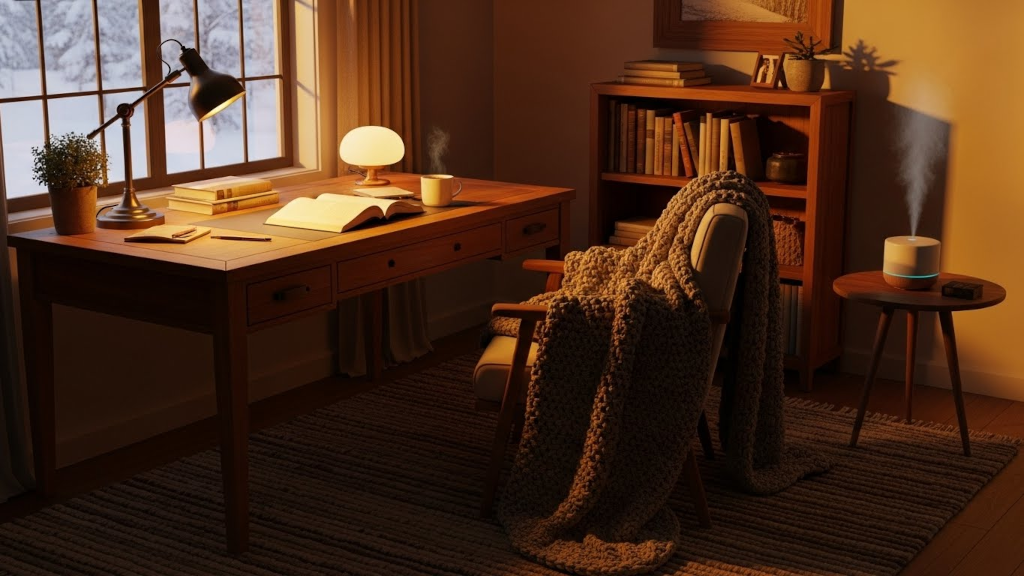A fragrance doesn’t just appear in a room; it unfolds. From the first moment it’s released into the air to the lingering trace that fades gently with time, scent has a natural rhythm. Understanding how that rhythm works enables you to create a more intentional and effective home fragrance experience.
Whether you're using cold air diffusion or traditional fragrance oils, every scent follows a progression. It isn’t static. It evolves through phases, affected by environment, time, and the way your nose interacts with aromatic compounds.
Let’s explore the life cycle of a scent and how you can work with it, rather than against it.
The First Impression: Top Notes in Motion
When you first turn on a home scent diffuser, what you notice right away is the opening layer. This initial experience is shaped by what perfumers refer to as top notes.
Top notes are usually light, bright, and designed to catch attention. Think citrus oils like lemon or bergamot, crisp herbal scents like peppermint, or soft bursts of lavender. These oils are naturally more volatile, which means they evaporate quickly and make their presence known early.
This phase is immediate and fleeting, typically lasting only a few minutes in active diffusion. It sets the tone, but it doesn’t tell the whole story. If a scent seems overly strong at first, give it a moment. The richness often settles into something much more balanced.
The Heart of the Experience: Middle Notes
As the top notes begin to lift, the middle notes rise. These are often referred to as the heart of the fragrance. They bring structure, tone, and emotional depth to a blend.
In cold air diffusion, middle notes tend to hold steady, creating the scent identity that lingers in your space. Floral oils like neroli, rose, or jasmine often sit here, as do herbal profiles like thyme and sage. In more grounding scents, you might detect a balance of spice, woods, or resin at this level.
This stage tends to last longer and is the core of what you associate with the scent. It’s also where memory and mood begin to anchor. You’re no longer reacting, you’re experiencing.
The Quiet Finish: Base Notes and Dry-Down
As time continues, every fragrance reaches a phase of soft diffusion. The more stable and longer-lasting molecules begin to carry the scent forward. These are known as base notes.
In diffuser oils, base notes like sandalwood, amberwood, vetiver, or patchouli provide weight and warmth. They are the notes that cling gently to the atmosphere, present but not assertive.
While top notes rise and vanish, and middle notes define, base notes whisper. They linger in textiles, furniture, and the corners of a room. Even after a diffuser is turned off, this stage may stay present for hours.
What Affects the Life Cycle of Scent
Several environmental and technical factors influence how long a scent lasts and how it unfolds in your home.
Airflow and Placement
A cold air diffuser placed near an HVAC return vent will disperse fragrance much more widely and evenly. However, too much airflow can reduce the life of top notes. Gentle air circulation helps maintain balance.
Oil Composition
Essential fragrance oils are designed for performance. The ratio of top, middle, and base notes determines the length and feel of a scent. Lighter oils fade faster, while richer oils with resin or wood will hold.
Humidity and Temperature
In humid or warm rooms, evaporation accelerates. In cooler, dry spaces, scent diffuses more slowly but lasts longer. Your climate and seasons will influence your experience.
Room Materials
Porous materials like fabric and wood absorb and release scent over time. This gives base notes a second life even after the diffuser is off. Glass, metal, and tile do not hold scent and release it more cleanly.

Creating a Scent Routine That Matches the Cycle
Understanding how scent behaves throughout the day allows you to work with it intuitively. For example, start your diffuser with bright citrus oils in the morning for a quick top note boost. In the afternoon, shift to blends rich in florals or herbs. Evenings are the perfect time for base-heavy fragrances like olibanum or suede, which hold steady and relax the space.
You can also pair your use of oils with the natural movement of your home. In high-traffic zones, lighter scents may rise and disappear quickly, requiring a higher output setting. In more contained spaces, like a bedroom or office, slow diffusion with base notes can maintain presence for longer.
Reading the Signs and Making Adjustments
If a fragrance suddenly feels dull, flat, or even overly strong, it’s worth considering where it sits in the life cycle. A scent that once felt clean and invigorating may now feel thin, indicating the top notes have lifted and only the base remains. Or perhaps the scent is no longer evolving, which could mean your diffuser has been running too long without pause.
Cold air diffusion is not a one-size-fits-all solution. It is meant to be lived with, adapted, and refined. You can change oils with the season, shift placement with the time of day, and layer your experience through thoughtful blends.
Let the Scent Live with You
Fragrance is not meant to be static. Like music or light, it changes with the moment. When you understand its cycle, you’re better prepared to create harmony in your space.
Use a trusted scent company to match your energy, to guide your day, and to leave a soft trace behind. In doing so, your home becomes more than scented, it becomes layered, intentional, and alive with atmosphere.








